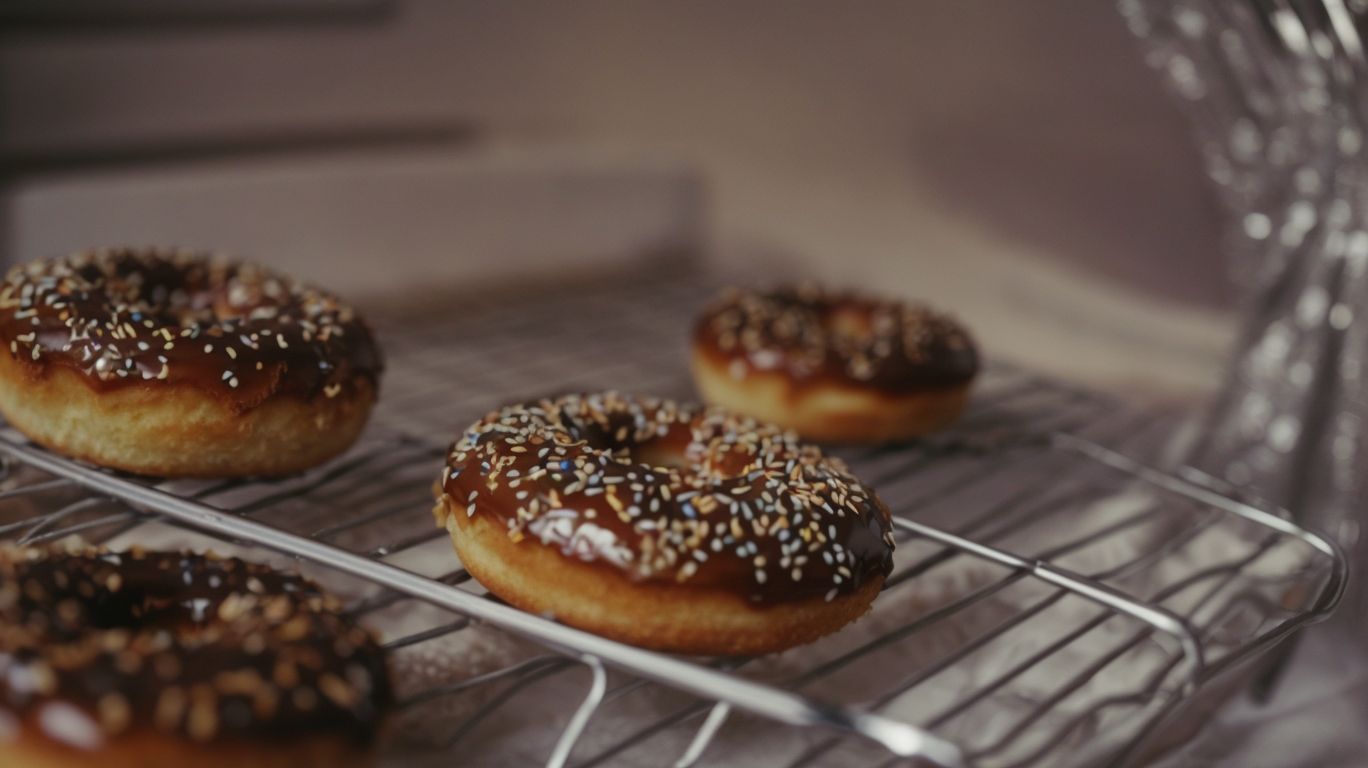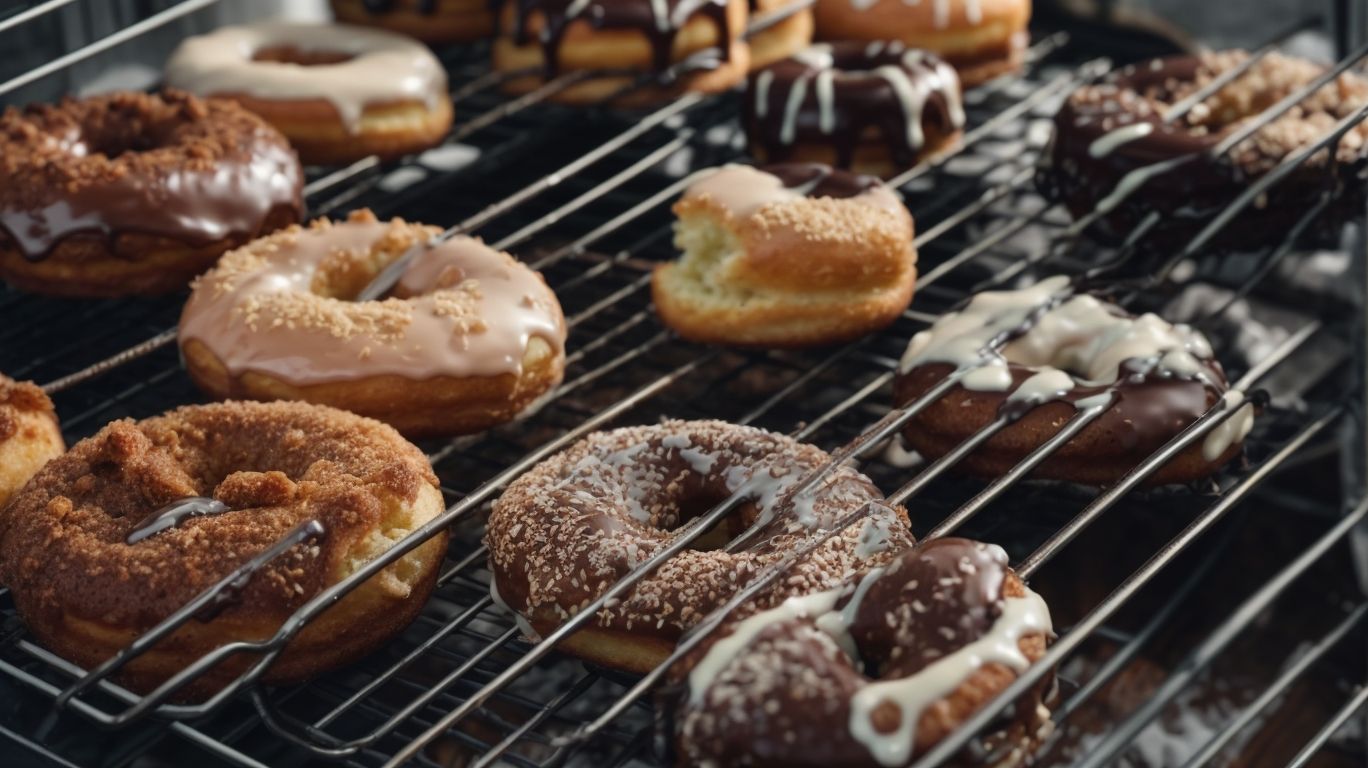How to Bake Donuts Without Yeast?
Are you a donut lover but want to avoid using yeast in your baking? Look no further!
We explore the different types of yeast, the common problems associated with using yeast, and how to bake delicious donuts without it.
From the ingredients needed for yeast-free donuts to some helpful tips for baking them, we will guide you through the process.
Discover the benefits of yeast-free baking and some mouth-watering yeast-free donut recipes. Let’s get started on this flavorful journey!
Key Takeaways:
What is Yeast and Why Bake Without it?
Yeast is a crucial ingredient in baking that helps dough rise and gives a fluffy texture to baked goods.
Some recipes opt to bake without yeast for various reasons. In yeasted donut recipes, for example, the yeast is responsible for the airy, light texture that we love. On the other hand, baked donuts that are yeast-free often result in a denser, cake-like texture. This difference in texture is due to the absence of yeast fermentation, which creates those characteristic air pockets inside the dough.
What Are the Different Types of Yeast?
There are various types of yeast used in baking, including active dry yeast, instant yeast, and fresh yeast, each with unique characteristics and activation methods.
Active dry yeast, a common choice for home bakers, needs to be dissolved in water before use. It has a longer shelf life when stored in a cool, dry place. Instant yeast, on the other hand, can be added directly to the dough without prior hydration, saving time in the baking process. Fresh yeast, with its higher moisture content, tends to be more perishable and is often preferred by professional bakers for its rapid activation.
When following a donut recipe, the type of yeast used can significantly impact the final product’s taste and texture. Active dry yeast, for instance, may require a longer rise time compared to instant yeast, leading to subtle variations in the donut’s crumb structure. Fresh yeast, being the most fragile, yields a distinctively mellow flavor profile in the finished donuts.
What Are the Common Problems with Using Yeast?
Using yeast in baking can sometimes lead to challenges such as overproofing, underproofing, or failed activation, affecting the final texture and taste of the baked goods.
Overproofing occurs when the dough rises for too long, leading to a collapsed or coarse texture in the final product. To prevent overproofing in your donut recipe, ensure you follow the recommended rising times closely and adjust based on temperature and humidity.
Failed activation of yeast can result from using old or improperly stored yeast, leading to dense or flat baked goods. Always check the expiration date of your yeast and activate it in warm liquid with a pinch of sugar before adding it to your recipe.
How to Bake Donuts Without Yeast?

Credits: Poormet.Com – Kevin Nguyen
Baking donuts without yeast is a simple and delicious alternative that yields equally satisfying results without the need for proofing and rising time.
For those seeking a quicker way to enjoy freshly baked donuts, this yeast-free donut recipe is a game-changer. The key to achieving the perfect texture lies in the right combination of ingredients and the method of preparation. To get started, gather your flour, sugar, baking powder, salt, milk, egg, and vanilla extract, ensuring they are at room temperature for optimal mixing. Once all ingredients are ready, begin by sifting the dry ingredients in a bowl to remove any lumps and ensure a smooth batter.
What Ingredients Are Needed for Yeast-Free Donuts?
Yeast-free donuts require ingredients such as flour, sugar, baking powder, and buttermilk to achieve a light and fluffy texture without the use of yeast.
-
Flour serves as the base ingredient, providing structure and volume to the donut batter. It is essential for creating the right consistency in the dough.
Sugar not only adds sweetness but also aids in browning and caramelization during baking, enhancing the overall flavor profile of the donuts.
-
Baking powder is a crucial leavening agent in yeast-free recipes, responsible for helping the donuts rise and giving them a soft, airy texture.
Buttermilk adds moisture and a slight tanginess, contributing to the tender crumb of the baked donuts.
What Are the Steps for Making Yeast-Free Donuts?
To make yeast-free donuts, combine the dry and wet ingredients, mix until well combined, shape the dough, and fry or bake to golden perfection for a delightful treat.
Start by sifting together the flour, sugar, baking powder, and a pinch of salt in a mixing bowl.
In a separate bowl, whisk together the milk (or dairy-free alternative), melted butter, and a splash of vanilla extract.
Gradually pour the wet ingredients into the dry mixture, stirring gently until you achieve a smooth, lump-free dough.
Remember not to overmix the dough, as it can lead to tough donuts.
Once you have a cohesive dough, use your hands to shape it into round donuts, ensuring they are of equal size for even cooking.
What Are Some Tips for Baking Yeast-Free Donuts?
For best results when baking yeast-free donuts, ensure the dough is at room temperature, use a donut pan for uniform shapes, and experiment with different glazes and toppings for added flavor.
When preparing the dough for yeast-free donuts, let it sit out for additional time if it’s been refrigerated to ensure it warms up properly. The temperature control during the proofing process significantly impacts the texture and rise of your donuts.
A donut pan is essential for achieving that classic donut shape and even baking. It helps maintain the structure and allows the donuts to bake evenly without spreading out too much.
In terms of flavors, the possibilities are endless. Try a lemon glaze for a zesty kick, or experiment with crushed nuts or cinnamon sugar for a comforting twist on the traditional donut.
What Are the Benefits of Baking Donuts Without Yeast?
Baking donuts without yeast offers a quicker and easier process, making it a convenient option for homemade treats that require minimal preparation time.
For those looking to whip up a batch of delicious donuts without the hassle of dealing with yeast, this method provides a hassle-free alternative that still delivers on taste and texture. By skipping the proofing and rising steps typically associated with yeast-based donuts, you can cut down significantly on preparation time. Baked donuts made without yeast are generally healthier as they don’t require deep-frying, making them a guilt-free indulgence.
Quicker and Easier Process
One of the primary benefits of baking yeast-free donuts is the time-saving aspect, allowing for a faster preparation and cooking process compared to traditional yeast-based recipes.
For busy individuals or those craving a sweet treat without the lengthy rise times, whipping up a batch of yeast-free baked donuts can be a game-changer. By eliminating the need to wait for dough to proof, the overall process becomes streamlined and simplified. This efficient method not only cuts down on active time spent in the kitchen but also reduces the overall cooking duration, making it ideal for those with packed schedules.
The simplicity of a yeast-free donut recipe means fewer ingredients and steps, resulting in a hassle-free baking experience. Home cooks can enjoy the satisfaction of freshly baked donuts without the intricate techniques associated with traditional yeast doughs, allowing them to indulge in warm, pillowy treats in no time.
Healthier Option
Opting for yeast-free donuts can be a healthier choice as it eliminates the need for deep-frying, reducing the overall calorie content and making them a more nutritious treat.
When you choose a yeast-free donut recipe, you are selecting a lighter alternative that often involves baking instead of frying. Baked donuts are not only lower in calories but also tend to retain more of their nutritional value compared to their fried counterparts. By baking the donuts, you can avoid the excess oil absorption that occurs during frying, resulting in a healthier option overall.
Suitable for Those with Yeast Allergies
Yeast-free donuts are an ideal option for individuals with yeast allergies or sensitivities, allowing them to enjoy delicious treats without the risk of adverse reactions.
By opting for yeast-free donuts, those with yeast allergies can still indulge in a delectable pastry experience while avoiding any potential discomfort. Interest in yeast-free recipes has been on the rise, as they cater not only to specific dietary needs but also to a broader audience looking for healthier alternatives.
Donut recipes that utilize baking powder or soda instead of yeast are becoming more prevalent, making it easier for those with dietary restrictions to satisfy their sweet cravings.
Baked donuts, a popular choice among health-conscious individuals, are often yeast-free, providing a lighter yet equally satisfying option to traditional fried varieties. Embracing yeast-free baking methods not only supports inclusivity but also promotes creativity in the kitchen, encouraging experimentation with different flavors and textures. So, whether you’re avoiding yeast or simply exploring new culinary horizons, yeast-free donuts offer a delightful treat for everyone to enjoy.
What Are Some Delicious Yeast-Free Donut Recipes?
Indulge in yeast-free donut delights with recipes such as classic glazed donuts, chocolate frosted donuts, and cinnamon sugar donuts that promise a flavorful and satisfying experience.
For a delicious twist, try making baked donuts with a hint of lemon zest in the batter, creating a tangy and refreshing flavor profile.
Alternatively, explore the world of fruity donuts by topping them with a mixed berry compote that bursts with sweetness.
If you’re a fan of rich and decadent treats, whip up a batch of peanut butter cream-filled donuts that will melt in your mouth with every bite.
The versatility of yeast-free donut recipes allows you to experiment with various ingredients and toppings to customize your perfect batch of donut delicacies.
Classic Glazed Donuts
Classic glazed donuts offer a timeless treat with a sugary coating that adds sweetness and shine to the fluffy donut base, creating a delectable combination of flavors and textures.
Making a perfect glazed donut starts with a tender yeasted donut recipe that results in a light, airy texture. After the donuts are fried* to a golden perfection, it’s time for the glaze.
The glaze is the pièce de résistance, crafted from a simple mixture of powdered sugar, milk, and perhaps a hint of vanilla for that extra touch of flavor. The glaze not only provides a glossy finish but also locks in moisture, ensuring each bite is a heavenly balance of sweetness. Achieving the ideal glazed texture is the key, with a perfect harmony between the sweet coating and soft donut underneath.
Chocolate Frosted Donuts
Chocolate frosted donuts combine rich cocoa flavors with a smooth glaze, offering a decadent twist on the traditional treat that satisfies chocolate lovers and dessert enthusiasts alike.
When preparing a batch of these delectable treats, selecting the finest ingredients is crucial. Opt for high-quality cocoa powder to infuse the donut batter with an intense chocolate taste. The donut recipe typically involves using yeast to achieve that fluffy texture, giving the baked donuts a light and airy feel.
Now, moving on to the glazing process, the key lies in creating a velvety chocolate glaze that coats the donuts perfectly. To achieve this, melt chocolate with butter and a hint of vanilla for that extra depth of flavor.
Cinnamon Sugar Donuts
Cinnamon sugar donuts offer a delightful blend of warm spices and sweet toppings, creating a comforting and aromatic dessert that pairs perfectly with a cup of coffee or tea.
When preparing these delectable treats, consider starting with a classic donut recipe, whether opting for the irresistible airy texture of a yeast donut or the slightly denser consistency of baked donuts. The magic truly unfolds when the donuts emerge from the oven and are generously coated with a mixture of cinnamon spice and sugar, creating that signature combination of flavors that is both nostalgic and indulgent.
Conclusion: Enjoy Your Yeast-Free Donuts

Credits: Poormet.Com – Terry Scott
Savor the delightful taste and simplicity of yeast-free donuts, whether you indulge in classic glazes, rich chocolates, or aromatic cinnamon sugar varieties for a homemade treat.
What makes yeast-free donuts truly appealing is the vast array of flavor combinations and toppings that can be explored. From fruity bursts of blueberry to decadent swirls of caramel, the options are endless when it comes to customizing your donut recipe. Whether you prefer baked donuts that are light and airy, or dense and cake-like textures that complement a morning coffee, yeast-free varieties cater to a range of preferences.
The beauty of yeast-free baking lies in its versatility, allowing you to experiment with different ingredients like nut flours, spices, and alternative sweeteners to create unique flavor profiles. Baking without yeast opens up a world of opportunities for those with dietary restrictions or simply looking to try something new in their baking endeavors.
Frequently Asked Questions
How to Bake Donuts Without Yeast?
Donuts are a delicious treat that many people love to bake at home. However, some may not have yeast on hand or may be looking for a yeast-free option. Here are some frequently asked questions about how to bake donuts without yeast.
1. Can I make donuts without using yeast?
Yes, you can make donuts without using yeast. There are several alternative ingredients and methods that can be used to achieve a similar texture and taste without yeast.
2. What can I use instead of yeast in donut recipes?
Instead of yeast, you can use baking powder, baking soda, or self-rising flour in your donut recipe. These ingredients act as leavening agents to make the donuts rise.
3. How does baking powder work in place of yeast?
Baking powder is a combination of baking soda, cream of tartar, and a starch. When mixed with liquid, it produces carbon dioxide gas, causing the dough to rise and creating a light and airy texture.
4. Can I use self-rising flour to make donuts?
Yes, self-rising flour contains baking powder and salt, which can be used as a substitute for yeast in donut recipes. Keep in mind that self-rising flour already contains leavening agents, so you may need to adjust the amount of baking powder or baking soda in your recipe.
5. What is the best method for making donuts without yeast?
The best method for making donuts without yeast is to use a combination of baking powder and baking soda. This will give the donuts a fluffy texture and help them rise properly.
6. Are donuts without yeast just as tasty as traditional donuts?
Yes, donuts made without yeast can be just as tasty as traditional donuts. They may have a slightly different texture, but they can still be delicious and satisfying. Experiment with different recipes and methods to find the perfect yeast-free donut for you.

